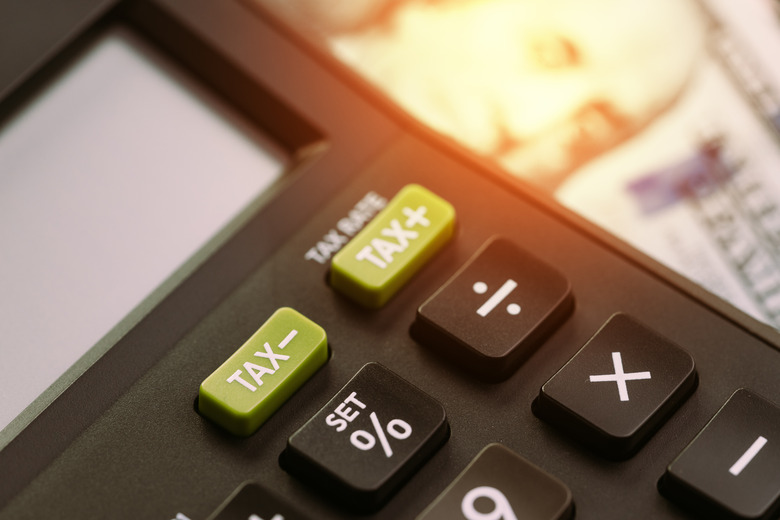How To Add Percentage To A Price
There are numerous situations where you might need to add a percentage to a listed price. Figuring tax is probably the most common, but other fees, such as shipping or handling, may also be based on a percent of the list price. The calculation is carried out with some straightforward arithmetic.
TL;DR (Too Long; Didn't Read)
Remember, percent just means hundredths and can be written in decimal format. As an example, 5% is the same as .05.
Step 1
Write down the current price. For example, an item's price is listed as $75.
Step 2
Write down the percentage that needs to be added. For example, there might be a sales tax of 8 percent. The final cost of this item will be $75 plus 8 percent of $75. You cannot add dollars and percentage, so you have to convert the percentage to dollars.
Step 3
Divide 75 by 100 to get 0.75. Multiply 0.75 by 8 to convert the 8 percent into $6.
Step 4
Add the price of $75 to the percentage converted to $6 to get the final cost of $81.
Step 5
Use the same procedure if you are a retailer. For example, you purchase an item for $60 from a wholesaler, and you know that you need to charge 35 percent more to make a profit after taking into consideration all the costs of doing business, such as paying employees and leasing the property. Divide 60 by 100 to get 0.6. Multiply 0.6 by 35 to convert the 35 percent into $21. Add the wholesale cost of $60 to the percentage, converted to $21, to reach the retail price of $81.
References
Cite This Article
MLA
Vandersteen, Julius. "How To Add Percentage To A Price" sciencing.com, https://www.sciencing.com/add-percentage-price-7683612/. 25 April 2018.
APA
Vandersteen, Julius. (2018, April 25). How To Add Percentage To A Price. sciencing.com. Retrieved from https://www.sciencing.com/add-percentage-price-7683612/
Chicago
Vandersteen, Julius. How To Add Percentage To A Price last modified March 24, 2022. https://www.sciencing.com/add-percentage-price-7683612/
